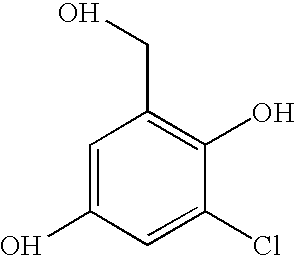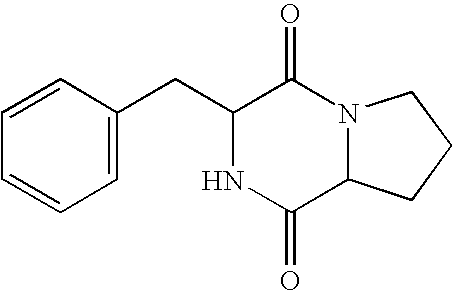Use of marine fungus originated compounds as antifouling agents
a technology of antifouling compounds and marine fungi, which is applied in the direction of antifouling/underwater paints, drug compositions, and active ingredients of nitro compounds, etc., can solve the problems of marine biofouling, affecting normal maritime operations, and affecting the normal operation of marine operations
- Summary
- Abstract
- Description
- Claims
- Application Information
AI Technical Summary
Benefits of technology
Problems solved by technology
Method used
Image
Examples
Embodiment Construction
A. Marine Fungi Strains Use in Producing Antibacterial and Antifouling Compounds
[0029] UST040128-009, a fungus strain identified as an Ampelomyces sp., was isolated from the 6-day-old natural biofilm developed on a glass slide in Hong Kong marine waters in January 2004. The biofilm on the glass was scrapped off by using a sterile cover slip and was then suspended in 500 μl of sterile Ringer solution (Oxoid). The sample was diluted 10 and 100 fold with autoclaved Ringer solution. Aliquots of 200 μl from the suspension was spread on corn meal agar (CMA, Oxoid) plate with 0.3% Rose Bengal (Acros) to inhibit fast-growing fungi. The antibiotics (streptomycin (USB) and penicillin G (Sigma)) at final concentrations of 100 mg L−1 were also added to the agar plate to inhibit the growth of bacteria. The inoculated agar plate was incubated at 25° C. and examined daily under a dissection microscope for the presence of developing fungal hyphae beginning from two days after inoculation. Distinct ...
PUM
| Property | Measurement | Unit |
|---|---|---|
| concentrations | aaaaa | aaaaa |
| temperature | aaaaa | aaaaa |
| flow rate | aaaaa | aaaaa |
Abstract
Description
Claims
Application Information
 Login to View More
Login to View More - R&D
- Intellectual Property
- Life Sciences
- Materials
- Tech Scout
- Unparalleled Data Quality
- Higher Quality Content
- 60% Fewer Hallucinations
Browse by: Latest US Patents, China's latest patents, Technical Efficacy Thesaurus, Application Domain, Technology Topic, Popular Technical Reports.
© 2025 PatSnap. All rights reserved.Legal|Privacy policy|Modern Slavery Act Transparency Statement|Sitemap|About US| Contact US: help@patsnap.com



